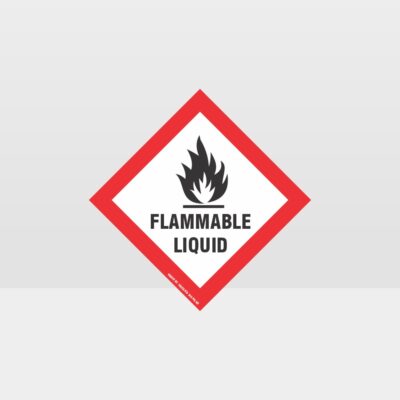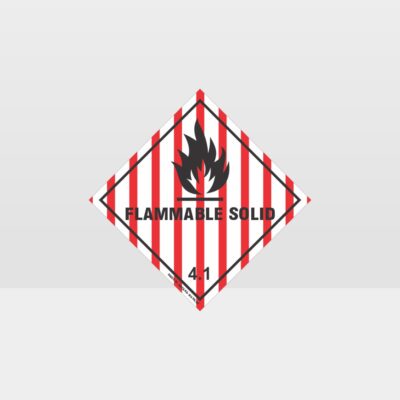- Home
- Shop
- Hazardous Signs
- Class 7 Radioactive Sign
Class 7 Radioactive Sign
$13.95 – $89.95Price range: $13.95 through $89.95 exc. GST
Hazardous Signs – Class 7 Radioactive Sign
- Sizes – 120mm x 120mm, & 250mm x 250mm 400mm x 400mm and 800mm x 800mm
- Laminated
- Supplied as an adhesive vinyl sticker or mounted on corflute, PVC, Magnetic material (only 250mm or 400mm) or ACM panel
- Meets industry standards when used appropriately
- For larger orders contact us for a quote
“Not sure whether you need a Radioactive I, II, or III label? Don’t stress — we’ve broken it down in plain English over on our Class 7 Radioactive Signs Blog. It’ll give you the full picture on what each number means and why it matters for compliance. Have a read before you load up the ute with the wrong signs — your safety team (and the regulators) will thank you!”
Hazardous Sign – Class 7 Radioactive Sign
Class 7 Radioactive Sign – Poisonous substances are those that are either likely to cause serious injury or death or damage to human health when ingested, inhaled or in contact with the skin. Examples include arsenic, cyanide, acids, lead compounds and various pesticides. The ‘Class 7 Radioactive Sign’ can be used for radiation generated by electromagnetic radiation, infrared, microwave, radio waves, thermal radiation and black box radiation.
The ‘Class 7 Radioactive Sign’ is a valuable tool to help protect personnel’s health and safety and is not a replacement for the preventive measures needed to minimise or remove hazards. The ‘Class 7 Radioactive Sign’ features a symbol of the tri-foil above the word radioactive accompanied by a bold number 7. The sign features a half yellow and half white background with black text and symbols.
Why Are There Different Radioactive Labels in Class 7?
Radioactive materials are split into subcategories (I, II, and III) to show the level of radiation hazard during transport. Each has slightly different wording, numbering, and layout, but all are required under NZS 5433, HSNO, and UN transport codes.
Radioactive I (Yellow)
Used for materials with very low radiation levels.
Often for packages safe enough to handle with minimal shielding.
Features the “RADIOACTIVE I” wording with a white background.
Radioactive II (Yellow)
Used for materials with moderate radiation levels.
Requires stricter handling, shielding, and placement in transport vehicles.
Marked with “RADIOACTIVE II” wording, yellow and white background, plus a transport index.
Radioactive III (Yellow)
Used for materials with higher radiation levels.
Requires maximum safety controls during storage and transport.
Features “RADIOACTIVE III” wording, yellow/white design, and mandatory activity/transport index boxes.
General Radioactive Sign (No numbering)
Sometimes used in workplaces or storage where the exact level isn’t specified but a general warning is needed.
Common for fixed facilities or awareness signage rather than transport.
Why This Matters
The split yellow/white background is standardised internationally and ensures the sign is instantly recognisable at a distance.
Having categories I, II, and III provides clarity on the risk level and dictates how shipments must be handled under NZS 5433, HSNO, and IAEA regulations.
Compliance with these sign formats is legally required for all radioactive material transport in New Zealand and Australia.
Note on 120 mm size: The 120 mm option is not compliant for transport placards, as NZ regulations require a minimum of 250 mm per side for vehicle use. However, it is very useful for small-scale applications such as cylinder cages, storage cabinets, and indoor warning signage where space is limited.
Note on larger sizes (400 mm – 800 mm): While 250 mm is the minimum required size for transport placards, larger signs (400 mm, 600 mm, 800 mm) are recommended for warehouses, depots, bulk storage areas, and outdoor use. The extra size improves long-distance visibility and makes hazards clear to staff, visitors, and emergency responders.
Classifications:
Properties of hazardous substances have been classified so to determine the best way the risks can be managed. They have been classified into eight key hazard classes:
- 1: Explosives.
- 2: Flammable gases.
- 3: Flammable liquids.
- 4: Flammable solids.
- 5: Oxidising substances.
- 6: Substances toxic to people.
- 8: Corrosive substances.
- 9: Substances toxic to the environment.
FAQ
Q1: Why do I need a Class 7 Radioactive Sign?
A Class 7 Radioactive Sign is required by NZ and international regulations to identify radioactive materials in transport, storage, and workplace areas. It helps reduce risks to staff, visitors, and emergency responders.
Q2: Where should a Radioactive Sign be used?
These signs must be displayed on vehicles transporting radioactive goods, as well as in laboratories, hospitals, nuclear medicine facilities, and storage areas where radioactive substances are present.
Q3: What sizes are available for Radioactive Signs?
The minimum size required for placards in transport is 250mm per side, with larger options (400mm–800mm) recommended for fixed storage, warehouses, and outdoor use.
How to choose the right mounting options.
Corflute: short term less than 2 years outdoors
Thin PVC: Medium term, more than 2 years
ACM: Long term 5 years or more
Supplied as a sticker:
long term digital print laminated for long term use. With a life of 5 years or more. We use a Hi Tac vinyl which allows it to be applied most surfaces.
Magnetic mounting option for the Class 7 Radioactive Sign
Flexible, vehicle-grade magnetic placards with the Class 7 Radioactive Sign printed on premium vinyl, laminated, and mounted to automotive magnetic sheeting. They stick to ferrous steel panels and remove without residue—ideal for vehicles that only carry DG sometimes.
Who they’re for
Contractors / couriers who transport Dangerous Goods occasionally
Hire or multi-use vehicles (no permanent signage)
Sites that swap classes depending on load (quick changeover)
Size: 250 × 250 mm (meets common road minimums).
Magnet: vehicle-grade sheet, 0.8–1.0 mm thick (30–40 mil), high-energy.
Face film: outdoor self-adhesive vinyl + UV laminate (gloss).
Operating temp: suitable from winter cold to summer heat (typical automotive range).
Print: high-contrast yellow/white with black wordingand symbol.
Where they work (and don’t)
Works on: painted steel panels that are flat, clean, and smooth.
Doesn’t work on: aluminium, stainless, plastics, composites, heavy body filler; vinyl wraps, ceramic coatings, heavily textured paint.
If customers have aluminium doors/ute trays, suggest self-adhesive or rigid ACM instead.
Fitment checklist
Clean & dry the panel (no wax/polish).
Warm, flat magnet—no curl.
Apply to flat steel only; press from centre out.
Do not bridge panel gaps, ribs or sharp curves.
Remove daily to clean/dry both surfaces; store flat.
In heavy rain/highway speeds, check edges haven’t lifted.
Care & maintenance
Remove and wipe after wet weather; store flat (never rolled tight).
Move position slightly each week to avoid differential fading.
Avoid use on freshly resprayed paint (allow full cure).
Compliance note
Magnet is a mounting method. The operator must ensure placards are the correct class, size, and securely affixed for the journey. Some carriers or site rules may require permanent/rigid placards—check your procedure.
For further information go to the Worksafe website https://www.worksafe.govt.nz/topic-and-industry/hazardous-substances/managing/hazardous-substances-signs/
NZS/AS 1319:1994 advocates simplicity and clarity in safety signage. To be effective, they should be easy to read and interpret at a glance.
The Standard is about the use of legible text and appropriate, simple symbols.
By simplifying the message, it reduces the risk of misinterpretation, which increases the chances of the sign’s warning or instruction being followed.
Enhancing the signs visibility through placement and colour
Placement and visibility will play a crucial role in the efficiency of safety signs.
The standard states that signs must be positioned near the hazard they are warning about, which ensures that the safety message is relevant. Also it advocates the use of contrasting colours for the background and lettering. This attention to the colour scheme will increase visibility and readability from a reasonable distance, which ensures the message is accessible.
The mission of Hazard Signs NZ is to provide quality-made safety signs to all of New Zealand. Our great prices and convenient online ordering platform make us a preferred supplier to many NZ businesses. All our signs are designed and manufactured in Invercargill to meet the workplace health and safety needs of all businesses and industries in New Zealand.
Please note. We make some of our safety signs to order and it may take 5 to 10 business days to receive. If you require your order urgently, please don’t hesitate to contact us to confirm an estimated delivery date prior to placing your order.
If you are not sure about what sign you need for your business, just contact us at +6432183350 or email us and we will make it ready for you.
| Material | Magnetic Material, Self Adhesive Vinyl Sticker, Corflute Sheet, Thin PVC Sheet, ACM Metal sheet |
|---|---|
| Design | Class 7 Radioactive Sign, Class 7 Radioactive I Sign, Class 7 Radioactive II Sign, Class 7 Radioactive III Sign |
| Size | 800mm x 800mm, 120mm x 120mm (5 stickers), 250mm x 250mm, 400mm x 400mm |
You must be logged in to post a review.
Related products
-


Class 3 Flammable Liquid Sign
$13.95 – $89.95Price range: $13.95 through $89.95 exc. GSTSKU: hazardous_024to026
Select options -

Non Hazardous Sign
$15.00 – $48.00Price range: $15.00 through $48.00 exc. GSTSKU: hazardous_057
Select options -

Class 5.1 Oxygen Hazard Sign
$13.95 – $89.95Price range: $13.95 through $89.95 exc. GSTSKU: hazardous_037
Select options -


Class 4 Flammable Solid Sign
$13.95 – $89.95Price range: $13.95 through $89.95 exc. GSTSKU: hazardous_029_030
Select options

















There are no reviews yet.